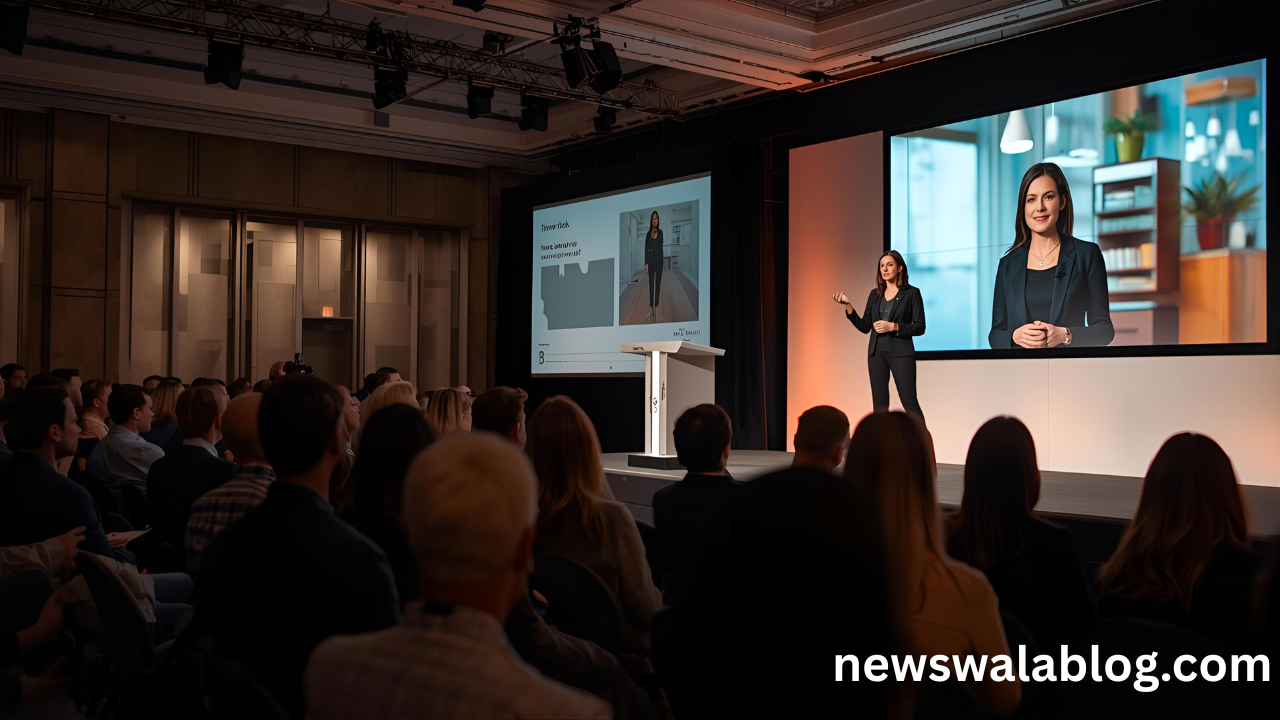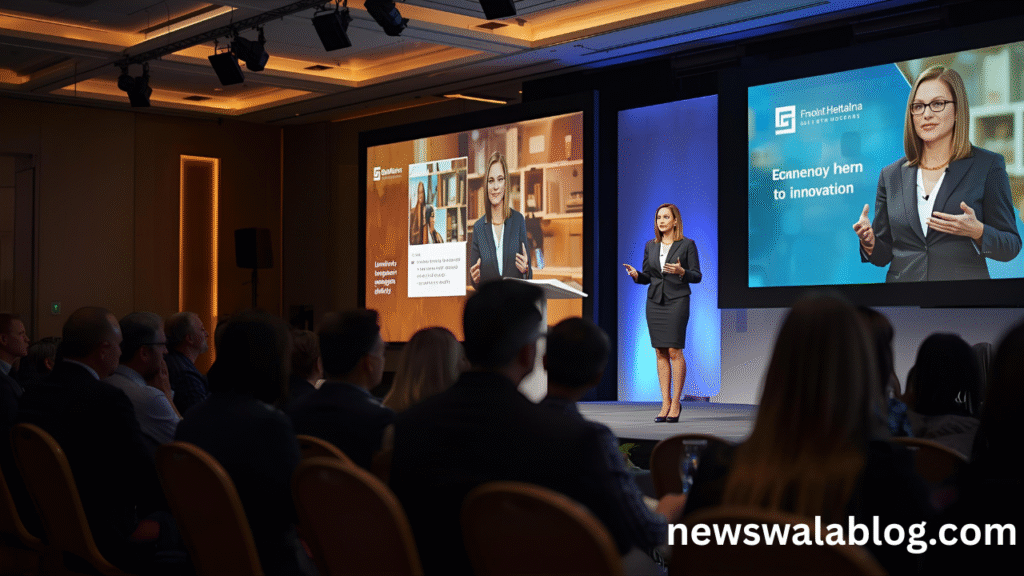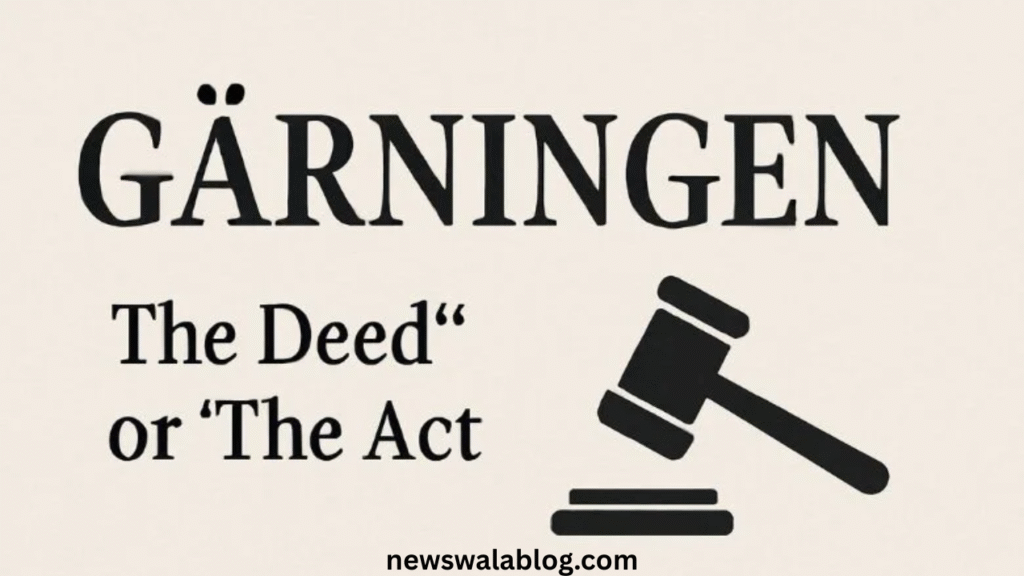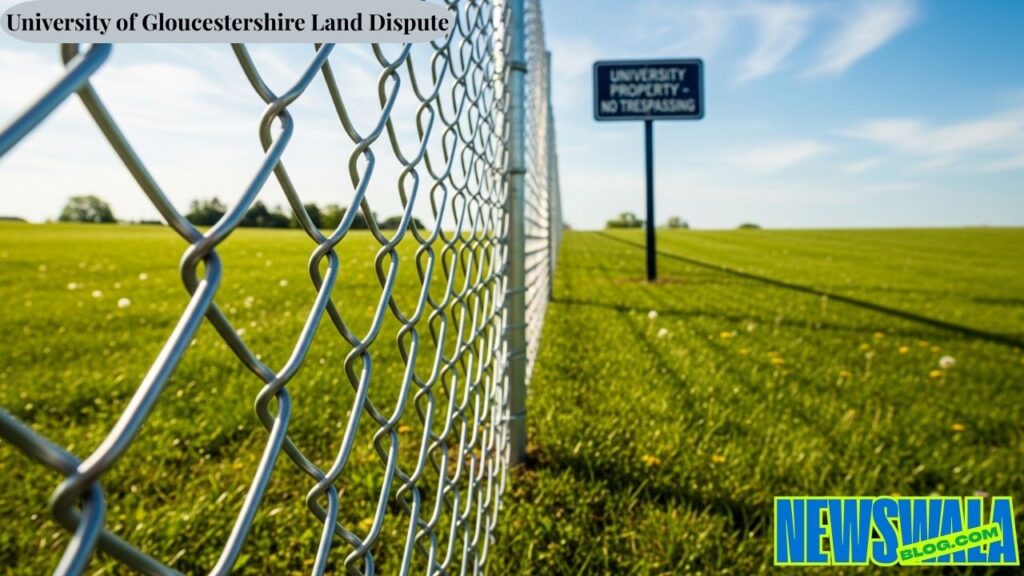News
Discovering shannon reardon swanick: a clear, practical profile
Published
2 weeks agoon
By
Owner
The name shannon reardon swanick has surfaced across a variety of online bios, profile aggregators, and professional listings. For readers who find this string of words in search results and want a single, useful place to understand who this person might be, this article walks through what the public record typically shows, why multiple versions of similar names appear online, and how to verify the right person. Whether you are researching for a story, vetting a potential collaborator, or optimizing content for search, this practical overview will help you make sense of the signals tied to the name shannon reardon swanick and how to use them responsibly.
Who is shannon reardon swanick?
Profiles that use the exact name shannon reardon swanick tend to present a mix of professional and community-focused activity: speaking, consulting, creative work, or leadership roles in local organizations. Because many bios are syndicated across small websites, the quick summary you find in one place is often repeated elsewhere — which means multiple pages can look like independent confirmation when they are actually copies of the same short biography. That pattern makes it essential to look beyond repeated snippets and to find primary listings that show a direct link between the person and the organization or credential being cited.
Public records and profiles to check

When verifying the identity behind the name, prioritize primary sources: official websites, licensing registries, company pages, and complete professional profiles. For many professionals, a well-populated LinkedIn entry, an official firm biography, or a record on an industry registry is the clearest public evidence. If you encounter the phrase shannon reardon swanick on aggregated pages, check whether those pages cite a primary source or whether they simply repeat the same text without attribution. A quick habit that saves time: click through to the site that first published the bio and confirm whether it links to an original organization, press release, or direct profile.
Why name variations cause confusion
Name collisions and variations are common. People change names after marriage, use maiden names in some places and professional names in others, or appear under slightly different formats across databases. Search engines then index all these variants, so search results for one exact phrase may mix several different people. That explains why searches for the exact phrase might turn up overlapping profiles, and why a careful researcher will treat repeated content with healthy skepticism until it can be traced to a primary source.
How to verify the identity behind shannon reardon swanick

Start with authoritative sources. Look for:
• A company or organization page that lists the person and includes contact details or a direct email.
• A full professional profile with employment dates and educational background.
• Industry registries or licensing boards when relevant (finance, legal, healthcare, and other regulated professions often have searchable public records).
• Original press releases, interviews, or long-form features in reputable publications.
If you find multiple short bios that repeat the same claims, use reverse searches and archive services to identify the earliest published version — that often points to the source. When in doubt, reaching out directly to the listed organization for confirmation is a straightforward step that clears up ambiguity.
Writing and ranking content about this name
If your goal is to publish an accurate, search-friendly page about shannon reardon swanick, follow clear content best practices. Use the exact phrase in the title, meta description, and early in the opening paragraph, but avoid keyword stuffing; natural placement is what readers and search engines value. Provide verifiable facts and link to primary sources whenever possible. A useful structure for a web page is: short catchy headline, a concise summary paragraph, a section of verified facts (roles, organizations, dates), then context (projects, public appearances) and finally ways to contact or follow official channels. Adding a short FAQ and structured data (schema for Person or Organization) helps search engines present your content more clearly in results.
What to do if you manage multiple pages that mention the same person

If you control multiple pages that reference the same profile, consolidate or canonicalize the best page to reduce duplicate-content issues. Keep the most authoritative, source-linked version as the main profile and use rel=canonical tags on any syndicated copies. That approach helps search engines identify the primary page and reduces the risk that thin, repeated bios will outrank the page with verified details. If you publish new information, include dates and citations so readers — and crawlers — can see why your page is current.
Practical content checklist before publishing
- Confirm at least two primary sources for every factual claim.
- Place the exact phrase in the title and in the first 100 words.
- Use natural language and prioritize readability over repetition.
- Add at least one authoritative external link (company page, registry, interview).
- Include a short FAQ and a clear contact or source section.
Final notes on reputation and responsibility
Names carry reputational weight. When content writers and site owners publish personal profiles, accuracy matters. Incorrect or unverified claims can cause confusion or harm. If you plan to write about someone publicly, base your piece on verifiable records, be transparent about sources, and be ready to correct any factual mistakes promptly.
Frequently Asked Questions
Q: How can I quickly tell whether a profile is reliable?
A: Reliable profiles link to primary sources — a company page, a verified social profile, or an industry registry. If a page only repeats a short bio without attribution, treat it as unverified.
Q: Should I use the exact name in my article title?
A: Yes. Using the exact phrase in the title and early paragraph helps clarity and search visibility, but keep the writing natural and informative.
Q: What if I find conflicting information across sources?
A: Favor primary or official sources and recent, reputable publications. When conflicts persist, note the discrepancy and cite the sources so readers can evaluate them.
Q: Is it okay to republish a short syndicated bio?
A: Republishing is common, but it’s better to link to the original or add context and verification — that makes your version more valuable and reduces duplicate-content risk.
Q: How do I request corrections if I find errors?
A: Contact the site owner or the organization listed on the profile, provide evidence for the correction, and ask for an update; reputable sites usually respond to documented requests.
Conclusion
This guide is meant to help you navigate search results and public bios tied to the exact phrase shannon reardon swanick, and to give practical steps for verifying and publishing accurate information. By prioritizing primary sources, structuring content for readers, and following clear publishing checks, you can create an authoritative, readable page that serves both audiences and search engines.
read more: jacksonville flight discontinuations: What travelers need to know
You may like
News
What gärningen Means — Law, Ethics & Everyday Use
Published
6 days agoon
October 2, 2025By
Owner
The Swedish term gärningen carries weight far beyond a literal “act.” It points to the concrete deed, the moment of doing that changes a situation — whether that change is small and kind, or grave and punishable. In everyday speech, in courtroom reports and in literature, gärningen is the linguistic lens that focuses attention on what actually happened rather than on motives, speculation, or labels.
Direct translation and core meaning
At its simplest, gärningen translates to “the deed” or “the act.” This makes it useful whenever you want to emphasise the action itself: the physical or moral movement that produced an outcome. Unlike some English equivalents that blur into abstract nouns, gärningen usually refers to a specific, observable action — the single event that can be described, examined and discussed in concrete terms.
Form and grammatical use

Grammatically, gärningen functions as a definite noun in Swedish: it signals a particular deed already known in the context. Writers and translators rely on gärningen when they need to mark specificity — for example, pointing to the exact act under investigation or praise. Because the word draws attention to the event itself, it often appears in sentences that describe evidence, consequences, or the direct results of behavior.
gärningen in legal contexts
In legal language, gärningen is a precise term. Court documents, police reports and legal commentary use it to identify the act that forms the basis of charges or judgments. When a prosecutor argues about responsibility, they distinguish between intent and the observable gärningen; the latter anchors the case in what can be proven. Terms that cluster around this use — like the person who committed the deed, the circumstances around it, and whether the deed meets the threshold for being punishable — make gärningen central to legal narratives.
Moral and religious connotations
Beyond courts, gärningen carries moral weight. In sermons, ethical essays and everyday moral talk, the word is used to discuss good and bad deeds in ways that stress consequence and responsibility. Phrases that pair gärningen with adjectives like “good” or “unforgivable” help listeners and readers focus on the moral dimensions of an action rather than just the character of the person who performed it. This makes the word especially useful in reflective writing, where authors want to lead readers to judge or empathize with specific moments.
Cultural and literary use

Writers, songwriters and journalists favour the precision of gärningen when describing a pivotal moment. In fiction, a novel may hinge on a single gärningen that reshapes relationships and plotlines; in music, a lyricist might use the word to underline a turning point in a story of love or loss. Because the term directs attention to the deed itself, it is a compact tool for storytelling: short, evocative and rich with interpretive possibilities.
Practical tips for writers and translators
If you are creating content for a Swedish audience or translating from Swedish, use gärningen when specificity matters. Prefer it in passages that describe evidence, the turning point of a narrative, or an event you want readers to judge on its own terms. For SEO and readability, place the term in headings sparingly and in the first 100–150 words of a piece when the subject is the deed itself. Balance technical clarity with human detail: explain consequences, offer context, and avoid overusing the term so it retains impact.
Conclusion

Understanding gärningen helps you see how Swedish language habitually separates action from identity, making precise description possible across law, literature and moral discourse. The term’s focus on “the deed” offers clarity: it names the moment when something happened, and invites examination of consequence, responsibility and meaning. Used carefully, gärningen strengthens both factual reporting and reflective writing by keeping the reader’s attention on what truly occurred.
Five short FAQs
Q1: What does gärningen mean in plain English?
It means “the deed” or “the act,” pointing to a specific action that produced an outcome. The term emphasises the event itself rather than motives.
Q2: Is gärningen a legal term?
Yes — it is commonly used in legal documents to identify the act that forms the basis of charges or judgments, focusing on what can be proven.
Q3: When should a translator use gärningen?
Use it when you need to translate a concrete, specific action; it works best for moments that are pivotal or legally relevant.
Q4: Can gärningen be used for good deeds?
Absolutely — the word applies equally to positive, neutral or negative actions and is often used in moral discussions to highlight the deed’s consequences.
Q5: How does gärningen differ from describing the person who acted?
gärningen points to the action itself, while describing the person focuses on character or motive; this distinction helps separate fact from judgement.
read more : Levapioli: The Complete Guide to Panel Clip Removal Too
News
University of Gloucestershire Land Dispute A Community Standoff in Longlevens
Published
1 month agoon
August 26, 2025By
Owner
The ongoing tensions between local residents and educational institutions have reached a boiling point in Gloucestershire, where the University of Gloucestershire land dispute has sparked considerable community concern. This conflict, centered around the institution’s Oxstalls campus in Longlevens, highlights the complex relationship between academic expansion and community rights.
Background and Context

Location and Setting
The heart of the University of Gloucestershire land dispute lies in the Longlevens area, where the institution operates its Oxstalls campus. This facility has become the focal point of a contentious debate that has drawn attention from residents, local authorities, and educational stakeholders across the region.
The Oxstalls campus serves as a vital educational hub, hosting multiple academic departments including business, law, sports, and health programs. Students and faculty rely on this facility for their daily academic pursuits, making any changes to the campus environment particularly significant.
Housing Crisis Context
The University of Gloucestershire land dispute cannot be viewed in isolation from the broader housing challenges facing the region. With approximately 4,700 people currently on Gloucester’s housing waiting list as of August 2024, the pressure for land development has intensified significantly.
These housing targets for Gloucestershire create a complex backdrop against which the current conflict unfolds. Local authorities must balance the educational institution’s expansion needs with the community’s housing requirements and residents’ traditional access rights.
The Current Dispute

Primary Concerns
At the center of the University of Gloucestershire land dispute is the institution’s decision to erect fencing around a field that residents previously accessed freely. This action has transformed what was once community space into restricted university property, triggering widespread local opposition.
The fencing installation represents more than just a physical barrier – it symbolizes changing relationships between the educational institution and the surrounding community. Residents who had grown accustomed to using these spaces for recreation and daily activities now find themselves excluded from areas they considered part of their neighborhood fabric.
Community Response
Local residents have expressed deep concerns about the neighboring university’s recent actions. Their frustration stems not only from the loss of access but also from what they perceive as insufficient consultation before implementing these significant changes.
The community’s reaction reflects broader anxieties about institutional expansion and its impact on established neighborhood patterns. Many residents feel that their voices have not been adequately heard in decisions affecting their daily lives and community spaces.
Planning Breach Allegations
The situation has escalated beyond community complaints to formal regulatory challenges. Residents have submitted a breach of planning complaint to Gloucester City Council, specifically relating to a previous planning application concerning two green gates on the property.
This legal challenge represents the community’s determination to use official channels to address their concerns about the University of Gloucestershire land dispute. The complaint suggests that residents believe the institution has exceeded the boundaries of previously approved development plans.
University’s Development Plans

Historical Development Context
The current University of Gloucestershire land dispute has roots in the institution’s long-term expansion strategy. In December 2020, the university submitted an outline planning application to Gloucester City Council for developing the Oxstalls/Plock Court site in Longlevens.
This application represented the university’s vision for expanding its facilities to better serve its growing student population and academic programs. However, the gap between institutional planning and community consultation has become increasingly apparent as the dispute has unfolded.
Balancing Competing Needs
The educational institution faces significant pressure to modernize and expand its facilities to remain competitive in the higher education sector. These development pressures must be balanced against community access rights and the housing requirements of the broader Gloucestershire region.
University administrators argue that campus development and modernization are essential for maintaining educational quality and attracting students. However, this institutional perspective often conflicts with residents’ expectations about maintaining traditional community spaces and access rights.
Dispute Resolution Attempts
Compromise Efforts
Recognizing the intensity of community opposition, the university has made some concessions regarding the University of Gloucestershire land dispute. The institution has agreed to lower the fencing on properties directly adjacent to residents’ homes, acknowledging some of their immediate concerns.
However, the university has insisted that other sections of the fencing must remain in place. This partial compromise has not fully satisfied resident concerns, as many community members view the entire fencing project as unnecessary and exclusionary.
Ongoing Tensions
The incomplete resolution of the University of Gloucestershire land dispute has left underlying tensions unresolved. While some physical adjustments have been made, the fundamental disagreement about land use and community access rights continues to simmer beneath the surface.
These ongoing tensions suggest that the current compromise may be temporary rather than a lasting solution. Both sides appear to maintain their core positions, indicating that future conflicts may emerge if underlying issues remain unaddressed.
Regulatory Involvement
Gloucester City Council finds itself in the challenging position of mediating between the educational institution and the local community. The council must balance its obligations to support educational development with its responsibility to represent resident interests and enforce planning regulations.
The regulatory body’s role in the University of Gloucestershire land dispute highlights the complex relationships between local government, educational institutions, and communities in modern urban planning disputes.
Stakeholder Perspectives
Local Resident Viewpoint
From the community perspective, the University of Gloucestershire land dispute represents a fundamental challenge to their quality of life and traditional neighborhood patterns. Residents worry about the precedent being set and the potential for further encroachment on community spaces.
Many locals view the fencing as symbolic of broader trends toward privatization and exclusion. They argue that educational institutions should be good neighbors who contribute to rather than detract from community life.
University Position
The educational institution’s perspective emphasizes campus security, development rights, and institutional needs. University officials argue that clear boundaries are necessary for maintaining safe learning environments and protecting valuable campus resources.
From the institutional viewpoint, the University of Gloucestershire land dispute reflects the challenges of operating a modern university campus within an established residential community. They contend that reasonable security measures should not be controversial when properly implemented.
Local Government Balance
Gloucester City Council must navigate between competing interests while ensuring compliance with planning regulations and development policies. The authority recognizes both the importance of educational institutions and the legitimate concerns of established residential communities.
This balancing act in the University of Gloucestershire land dispute illustrates the broader challenges facing local governments in managing urban development and community relations in contemporary Britain.
Broader Implications
Housing Development Connections
The University of Gloucestershire land dispute connects to wider concerns about land use planning and the ongoing housing crisis affecting Gloucestershire and similar regions across the country. The conflict highlights how competing demands for limited land resources can create tension between different community stakeholders.
Community-University Relations
The long-term impact of this dispute on town-gown relationships could extend well beyond the immediate controversy. Educational institutions across the country will be watching to see how this conflict is resolved and what lessons can be learned for future campus development projects.
Planning Precedents
The resolution of the University of Gloucestershire land dispute may establish important precedents for similar conflicts in other university towns. The balance struck between institutional development rights and community access could influence future planning decisions and policy development.
Conclusion
The University of Gloucestershire land dispute represents more than a local planning disagreement – it embodies the broader tensions between institutional development needs and community rights in contemporary Britain. As housing pressures intensify and educational institutions seek to modernize their facilities, similar conflicts may become increasingly common across university towns throughout the country.
The ultimate resolution of this dispute will likely require creative solutions that acknowledge both the university’s legitimate development needs and the community’s reasonable expectations for consultation and access. Success will depend on all stakeholders’ willingness to engage in meaningful dialogue and compromise.
The ongoing University of Gloucestershire land dispute serves as a reminder that successful community development requires balancing competing interests while maintaining the collaborative relationships essential for thriving neighborhoods and educational institutions.
Also Read: Gauff French Open Trophy Complaint The Mini Replica Controversy That Sparked Tennis Debate
News
Gauff French Open Trophy Complaint The Mini Replica Controversy That Sparked Tennis Debate
Published
2 months agoon
August 20, 2025By
Owner
Introduction
Coco Gauff’s triumphant French Open victory in 2025 was supposed to be a moment of pure celebration, but it quickly became the centre of an unexpected controversy. The young American tennis sensation found herself at the heart of a trophy-related discussion that would capture the attention of fans worldwide. After defeating Aryna Sabalenka in a thrilling final at Roland Garros, Gauff discovered a little-known rule that left many questioning tournament traditions.
The Gauff French Open trophy complaint highlighted an interesting aspect of Grand Slam tournaments that most fans never knew existed. What should have been a straightforward celebration turned into a learning experience about tennis protocols and sparked conversations across social media platforms.
Background on Coco Gauff
Coco Gauff has established herself as one of tennis’s brightest rising stars since breaking onto the professional scene. Her journey to tennis stardom began at a remarkably young age, and she has consistently demonstrated exceptional talent and determination on the court.
The American tennis player previously captured her first Grand Slam title at the US Open in 2023, proving that she could perform under the intense pressure of major tournaments. Her success at Flushing Meadows laid the foundation for future achievements and established her as a formidable competitor in women’s tennis.
At the French Open, Gauff had been building momentum over several years. Her clay court game continued to improve with each passing season, and she entered the 2025 tournament with high expectations from fans and tennis experts alike. The young athlete’s perseverance through previous disappointments at Roland Garros made her eventual victory even more meaningful.
The Gauff French Open Trophy Complaint Details

The heart of the Gauff French Open trophy complaint centred around a surprising discovery she made after winning the championship. Following her victory celebration on court, where she was presented with the impressive Coupe Suzanne Lenglen trophy, Gauff learned that she wouldn’t be taking that specific trophy home with her.
Instead of receiving the actual trophy that fans saw during the championship ceremony, Gauff was given a significantly smaller replica version. This revelation came as a shock to many, including the champion herself, who shared her experience with fans through social media and television appearances.
During her appearance on the TODAY show, Gauff explained the situation with her characteristic humour and grace. She demonstrated just how much smaller the replica trophy was compared to what viewers had seen during the ceremony, sparking widespread discussion about tournament practices.
The tennis star’s reaction was refreshingly honest and relatable. Rather than expressing genuine anger or frustration, she approached the situation with good humour while still pointing out the interesting discrepancy between expectation and reality.
Tournament Response

French Open officials have maintained that this practice follows long-standing tournament traditions and regulations. The tournament organisers explained that the ceremonial trophies used during the presentation are kept by the tournament, while champions receive specially crafted replica versions.
This policy exists across various Grand Slam tournaments, though it’s rarely discussed publicly. The original trophies are considered permanent fixtures of the tournament’s history and heritage, making them too valuable and historically significant to be given away permanently.
Tournament officials emphasised that the replica trophies are still high-quality, professionally crafted pieces that represent the same achievement and honour. However, they acknowledged that the size difference between ceremony and take-home trophies could be surprising for winners who aren’t familiar with this protocol.
Media and Public Reaction
The discussion surrounding the Gauff French Open trophy complaint quickly gained traction across tennis media outlets and social media platforms. Fans expressed surprise and amusement at learning about this previously unknown aspect of Grand Slam tournaments. Many supporters rallied behind Gauff, finding her reaction both entertaining and endearing.
Andy Murray, the former world number one, even joined the conversation on social media. The British tennis star humorously commented on the situation, writing about the tiny size of replica trophies and adding his support to the discussion surrounding tournament practices.
Tennis fans shared their own discoveries about similar practices across different tournaments, creating an educational moment for the broader tennis community. The conversation highlighted how many aspects of professional tennis remain hidden from public view.
Social media users praised Gauff for bringing attention to this issue in such a lighthearted way. Her ability to find humour in the situation while still making a valid point resonated with fans and fellow athletes alike.
Broader Context
This incident shed light on similar practices throughout professional tennis history. Many Grand Slam champions have encountered comparable situations, though few have brought as much public attention to the matter as Gauff did.
Serena Williams, for example, has previously shown her collection of replica trophies in media appearances, though without the same level of public discussion that Gauff’s situation generated. The practice of keeping original trophies while providing replicas is actually quite common across major sporting events.
Trophy presentation protocols at Grand Slam tournaments have evolved over decades, with various considerations, including security, historical preservation, and practical logistics, playing roles in current policies. These tournaments balance the desire to create memorable moments for champions with the need to preserve important artefacts.
The rights of players versus tournament responsibilities became a topic of discussion following Gauff’s experience. While players earn their victories and deserve meaningful recognition, tournaments also have legitimate interests in maintaining their historical collections and traditions.
Resolution and Aftermath

The Gauff French Open trophy complaint resolved itself naturally as Gauff continued to approach it with humour and understanding. Rather than demanding changes or expressing serious complaints, she used the experience as an opportunity to educate fans and share a relatable moment.
Her handling of the situation actually enhanced her public image, demonstrating maturity and good humour in the face of an unexpected discovery. Fans appreciated her authenticity and ability to find levity in what could have been a disappointing moment.
The incident sparked broader conversations about transparency in tournament practices and whether players should be better informed about such policies before competitions. Some suggested that tournaments could benefit from clearer communication about these traditions.
While no immediate policy changes resulted from the discussion, the attention brought to this practice may influence how tournaments communicate with future champions about trophy protocols.
Conclusion
The Gauff French Open trophy complaint became more than just a simple misunderstanding about tournament practices. It evolved into a moment that showcased the young champion’s personality while educating tennis fans about lesser-known aspects of Grand Slam tournaments.
This incident adds an interesting chapter to Gauff’s career narrative, demonstrating her ability to handle unexpected situations with grace and humour. Her approach to the trophy situation reflected the same positive attitude that has endeared her to fans throughout her young career.
The broader implications for professional tennis include increased awareness about tournament traditions and the potential for more transparent communication between organisers and participants. While the “complaint” was more a humorous observation than a serious grievance, it highlighted important questions about player expectations and tournament practices.
Ultimately, this episode serves as a reminder that even in professional sports, there are always new discoveries to be made and traditions to be understood. Gauff’s French Open victory will be remembered not just for her impressive performance on court, but also for the lighthearted way she handled an unexpected post-match revelation.
Also Read: Manchester City 115 Charges Verdict Everything You Need to Know About the Historic Case
Trending
-

 Celebrity2 months ago
Celebrity2 months agoPeter Kay Weight Loss The Incredible Transformation of Britain’s Beloved Comedian
-

 Entertainment1 month ago
Entertainment1 month agoErazno y La Chokolata The Ultimate Hispanic Comedy Radio Experience
-

 Food & Drink1 month ago
Food & Drink1 month agoDiscover the Authentic Taste of Бишкоти ди Прато Italy’s Most Beloved Almond Biscuits
-

 Entertainment1 month ago
Entertainment1 month agoThe Complete Guide to Crusader Crossword Puzzles
-

 Celebrity2 months ago
Celebrity2 months agoJalen Green Girlfriend Complete Guide to His Dating Life and Relationships
-

 Entertainment1 month ago
Entertainment1 month agoKirby Dedo The Ultimate Guide to Kirby Finger Puppets and King Dede Collectibles
-

 News2 months ago
News2 months agoManchester City 115 Charges Verdict Everything You Need to Know About the Historic Case
-

 Business2 months ago
Business2 months agoUK Printer Security Alerts A Complete Guide to Protecting Your Organization

